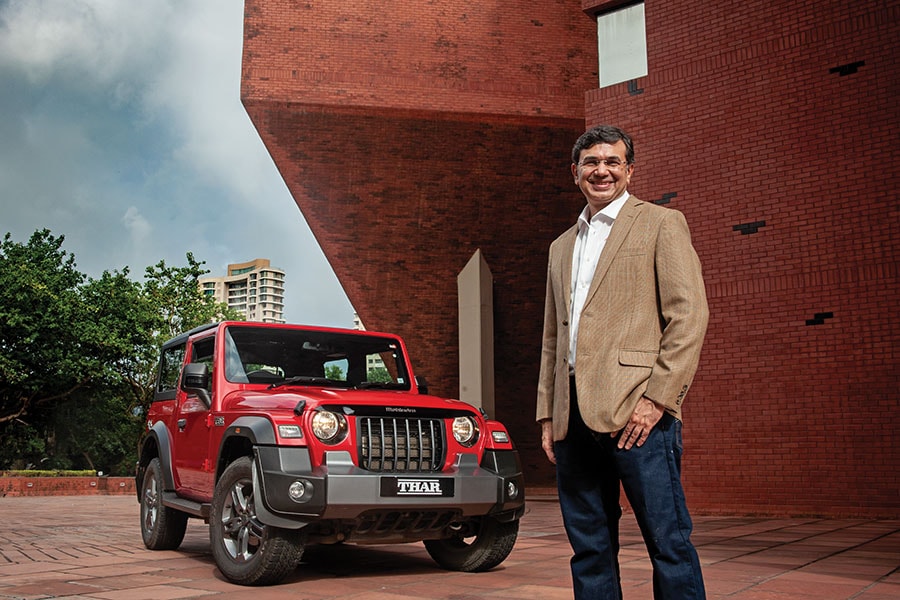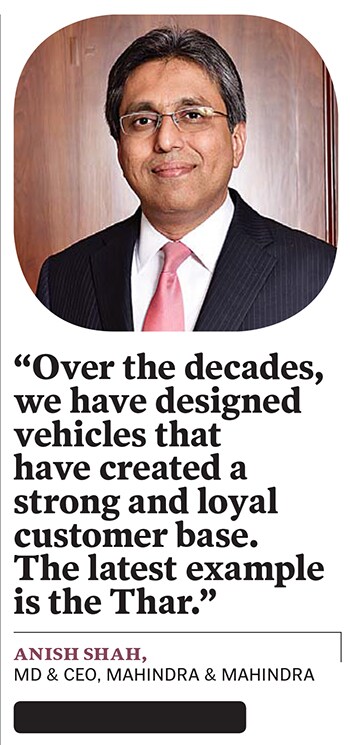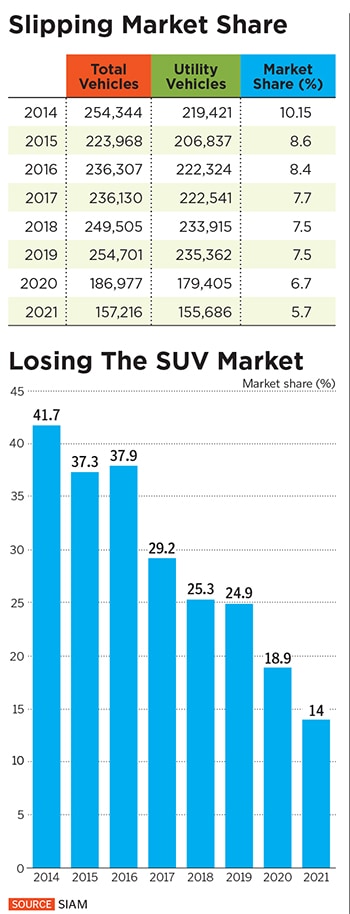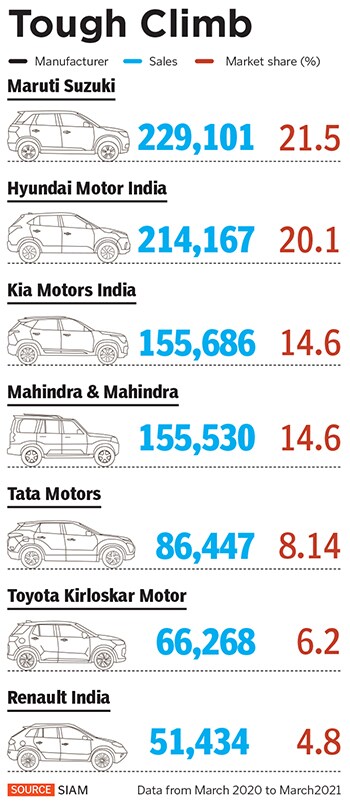
Rs 12,000 crore, 23 new products: Inside Mahindra's five-year turnaround plan and the man helming it
Since 2014, Mahindra & Mahindra has lost its once impregnable stronghold in the SUV market, and its auto market share has dropped by half since then. Now the Thar-maker is planning to claim the lost ground, and Rajesh Jejurikar is raring to go
 To win in the SUV battle, you don’t have to make a product that’s similar to what somebody else is making. We must focus on our strengths: Rajesh Jejurikar, executive director (auto & farm sectors), Mahindra & Mahindra
To win in the SUV battle, you don’t have to make a product that’s similar to what somebody else is making. We must focus on our strengths: Rajesh Jejurikar, executive director (auto & farm sectors), Mahindra & Mahindra
Image: Neha Mithbawkar for Forbes India
Even in his wildest dreams, Rajesh Jejurikar hadn’t seen it coming. Of course, he knew there would be some frenzy. After all, the Thar is an iconic model, and Mahindra was bringing out the second generation of the popular SUV after a decade. The new model would feature contemporary design, the latest infotainment options, an automatic gearbox that appeals to an urban clientele, and refreshed engines, among a slew of changes. For the first time ever, Mahindra also packed a petrol engine in the SUV.
The Thar, which bears a striking resemblance to the Jeep Wrangler, was launched in India last October. The hysteria had become obvious when the first unit of the SUV was sold in an auction ahead of the official launch for a staggering ₹1.1 crore, the proceeds of which went towards a Covid-19 relief fund.
Then, as bookings opened, Jejurikar, the man in charge of the automobile business at Mahindra Group, knew that the company could be in for some trouble. A veteran at the homegrown automaker, Jejurikar has led and lived through the launch and hype of some of the company’s iconic vehicles, ranging from the Scorpio to the XUV 500 over the past two decades. In 2002, when the Mumbai-headquartered company launched the Scorpio, Jejurikar was the man in charge of marketing at the automaker. In 2011, when it rolled out the XUV 500, he was the chief of operations for the automobile business.
In the next five years, Jejurikar, who took charge as the executive director for the auto and farm sectors at the Mahindra Group 15 months ago, plans to launch 23 new products across passenger and commercial vehicle segments. The company has lined up capital expenditure of ₹12,000 crore for the launch of new models, upgrades of existing ones and new variants. Of these, nine will be in the SUV segment, while 14 will be in the light commercial vehicle (LCV) category. Between July and September, the company will also launch two new models, including the Bolero Neo and XUV 700.
(This story appears in the 30 November, -0001 issue of Forbes India. To visit our Archives, click here.)




 Much of the shortfall is a result of the second Covid-19 wave, and a shortage of semiconductors that has hit manufacturing businesses across the world. “It’s a mania that is unimaginable and this is not because we are making 1,500 units a month,” Jejurikar adds. “We are still producing 3,000-plus units, but we are getting bookings of 6,000 a month.” That means, for someone booking a Mahindra Thar in July, delivery isn’t expected until April 2022.
Much of the shortfall is a result of the second Covid-19 wave, and a shortage of semiconductors that has hit manufacturing businesses across the world. “It’s a mania that is unimaginable and this is not because we are making 1,500 units a month,” Jejurikar adds. “We are still producing 3,000-plus units, but we are getting bookings of 6,000 a month.” That means, for someone booking a Mahindra Thar in July, delivery isn’t expected until April 2022.  New thinking, new philosophy
New thinking, new philosophy Leading the change
Leading the change



